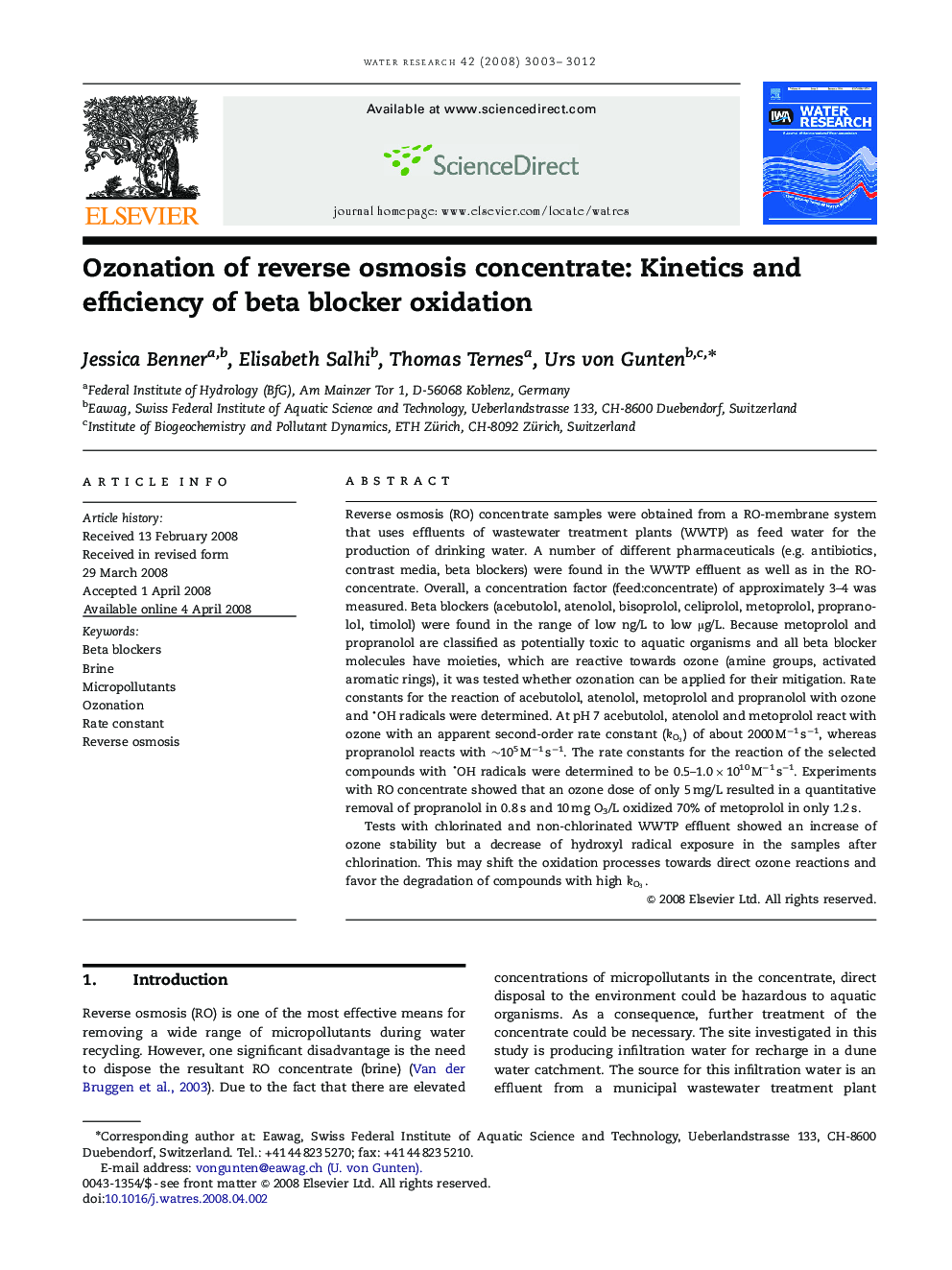| کد مقاله | کد نشریه | سال انتشار | مقاله انگلیسی | نسخه تمام متن |
|---|---|---|---|---|
| 4485573 | 1316957 | 2008 | 10 صفحه PDF | دانلود رایگان |

Reverse osmosis (RO) concentrate samples were obtained from a RO-membrane system that uses effluents of wastewater treatment plants (WWTP) as feed water for the production of drinking water. A number of different pharmaceuticals (e.g. antibiotics, contrast media, beta blockers) were found in the WWTP effluent as well as in the RO-concentrate. Overall, a concentration factor (feed:concentrate) of approximately 3–4 was measured. Beta blockers (acebutolol, atenolol, bisoprolol, celiprolol, metoprolol, propranolol, timolol) were found in the range of low ng/L to low μg/L. Because metoprolol and propranolol are classified as potentially toxic to aquatic organisms and all beta blocker molecules have moieties, which are reactive towards ozone (amine groups, activated aromatic rings), it was tested whether ozonation can be applied for their mitigation. Rate constants for the reaction of acebutolol, atenolol, metoprolol and propranolol with ozone and OH radicals were determined. At pH 7 acebutolol, atenolol and metoprolol react with ozone with an apparent second-order rate constant (kO3kO3) of about 2000 M−1 s−1, whereas propranolol reacts with ∼105 M−1 s−1. The rate constants for the reaction of the selected compounds with OH radicals were determined to be 0.5–1.0×1010 M−1 s−1. Experiments with RO concentrate showed that an ozone dose of only 5 mg/L resulted in a quantitative removal of propranolol in 0.8 s and 10 mg O3/L oxidized 70% of metoprolol in only 1.2 s.Tests with chlorinated and non-chlorinated WWTP effluent showed an increase of ozone stability but a decrease of hydroxyl radical exposure in the samples after chlorination. This may shift the oxidation processes towards direct ozone reactions and favor the degradation of compounds with high kO3kO3.
Journal: Water Research - Volume 42, Issue 12, June 2008, Pages 3003–3012